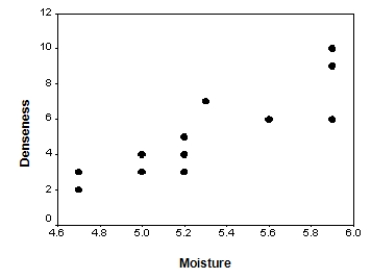Asked by Arlissa Montano on Jun 25, 2024

Verified
The moisture in a wet mix of cement was considered to have an effect on the denseness of the finished product.The moisture of the mix was controlled at various levels,and the denseness of the finished product was measured.The data were entered into SPSS,and the following output was generated. 



 The standard error for the slope is reported to be 0.90.Which of the following interpretations of this standard error is correct?
The standard error for the slope is reported to be 0.90.Which of the following interpretations of this standard error is correct?
A) If this experiment were repeated many times,we would estimate that our estimated slope of 5.0 is about 0.90 away from the true slope 1,on average.
B) If this experiment were repeated many times,we would estimate the resulting estimated slopes to differ from the true slope 1 by about 0.90,on average.
C) If this experiment were repeated many times,we would estimate the estimated slope of 5.0 to differ from the true slope 1 by about 0.90.
D) If this experiment were repeated many times,we would estimate the average distance of the resulting estimated slopes from the hypothesized value of 0 to be about 0.90.
Standard Error
A measure of the dispersion or variability of a sampling distribution.
Slope
The measure of the steepness or incline of a line, defined as the ratio of the vertical change to the horizontal change between two points on the line.
True Slope
The actual slope of the relationship between two variables in the population, as opposed to an estimated slope.
- Comprehend the meaning of standard error in regression estimates.

Verified Answer
NR
nareen reddyJul 01, 2024
Final Answer :
B
Explanation :
The standard error for the slope (0.90) indicates the amount of variability in the estimated slopes that would occur if the experiment were repeated many times due to sampling error. Therefore, option B correctly interprets this standard error as the expected difference between the estimated slopes and the true slope. Option A is incorrect because it implies that the true slope has a range of possible values, whereas it is a fixed value. Option C is incorrect because it implies that the estimated slope will always differ from the true slope by 0.90, which may not be the case. Option D is incorrect because it refers to the distance of estimated slopes from 0, which is not relevant in this case.

Learning Objectives
- Comprehend the meaning of standard error in regression estimates.